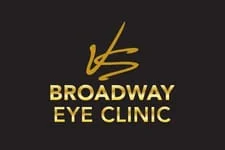Binocular Vision Dysfunction describes any condition where the two eyes have difficulty working together as a team to create one clear image. This results in image misalignment. The body attempts to correct this vision misalignment by overusing and severely straining the eye muscles.
In people with normal binocular vision, their eyes work in tandem, perfectly in sync at all times, to send one clear, focused picture to the brain. However, in people with Binocular Vision Dysfunction, the eyes do not work together and are not perfectly synchronized - this makes it difficult for them to see one clear image.
When the misalignment is severe, it causes double imagery or double vision. However, in most cases, the misalignment is very subtle, historically making it difficult to identify. Even when the misalignment is small and physically unnoticeable, the symptoms can be debilitating.
Causes of BVD
BVD can be caused as a result of several different factors. Some people experience BVD due to facial asymmetry, where one eye is physically higher than the other. It can also be caused by a nerve or eye muscle abnormality, which is something many people are born with. As people with these abnormalities get older, the eye muscles become even more strained from trying to constantly realign the image they are sending to the brain, which results in the uncomfortable symptoms of BVD.
BVD can also develop as a result of a stroke, brain injury, or similar neurological disorder. It can manifest at any time, with symptoms usually developing around 40-years of age.
Symptoms of BVD
The symptoms of BVD can interfere with a patient’s ability to function, including basic tasks such as driving a car or reading. Essentially, BVD can severely negatively impact their quality of life. Patients with BVD experience the following symptoms:
- Headaches
- Neck ache/head tilt
- Double vision
- Sensitivity to light/glare
- Reading difficulties
- Anxiety
- Motion sickness
- Dizziness
- Balance Problems
- Fatigue with reading
- Shadowed/overlapping/blurred vision
- Feeling overwhelmed in crowds/large spaces
- Skipping lines/losing your place while reading
- Closing/covering an eye to make it easier to see
“The dizziness and anxiety began eight years ago and became progressively worse as time went by. The doctors wanted to revoke my driver’s license, but I need to drive for my work. My new micro-prism lenses made an immediate difference. I can now drive with confidence. The quality of my life is back to where it should be.”
- Keith
BVD is also frequently misdiagnosed as one or more of the following conditions:
- ADD / ADHD
- Agoraphobia
- Anxiety / Panic disorders
- Persistent Post-Concussive symptoms
- Cervical misalignment
- Meniere’s Disease
- BPPV (Benign Paroxysmal Positional Vertigo)
- Psychogenic dizziness / Chronic Subjective Dizziness
- PPPD (Persistent Postural-Perceptual Dizziness)
- Vestibular Migraine / Migraine Associated Vertigo (MAV)
- Migraines
- MS (Multiple Sclerosis)
- Reading & learning disabilities
- Sinus problems
- Stroke
- TMJ disorders
The Patient Experience
While at least 10% to 20% of the population suffers from Binocular Vision Dysfunction, almost no one knows about this condition. To make matters more difficult, people suffering from BVD have a small amount of vision misalignment not found on a routine eye exam. With our micro-prism lenses, patients are immediately able to regain their quality of life.
Watch our below video to learn how individuals found relief from their symptoms.
Treatment for BVD
Our doctors at Broadway Eye Clinic have trained in the pioneering work of diagnosing and treating Binocular Vision Dysfunction. In addition to the standard eye examination, our compassionate doctors utilize a comprehensive NeuroVisual Examination to determine the extent of a patient’s misalignment and use those results to prescribe specialized aligning lenses. These micro-prism lenses realign the images to create one clear image, eliminating the need for the body’s struggle to do so.
Our micro-prism lenses help patients to feel noticeably better immediately. In fact, the average patient will notice a 50% reduction of symptoms by the end of their first visit. Over the next several visits, the aligning lenses are fine-tuned and continue to improve and eliminate BVD symptoms.
In the past, BVD was difficult to identify, as the standard vision tests are not sensitive enough to find the small amounts of misalignment causing BVD. And of course, not everyone with the aforementioned symptoms will have BVD. We use a specialized screening method to accurately detect this condition.
We are able to treat your Binocular Vision Dysfunction, along with any additional vision impairments, allowing the patient to see clearly, effectively, and provide significant relief from symptoms.
Our screening method involves two parts: Our Screening Questionnaire, which helps clarify who might benefit from evaluation and care, and our Diagnostic Method, which is where we identify the very small amounts of misalignment requiring treatment with specialized micro-prism lenses.
The Screening Questionnaires include:
Dr. Stephens is a specialist in the diagnosis and treatment of Binocular Vision Dysfunction and has trained under the Founder of NeuroVisual Medicine, Dr. Debby Feinberg of the NeuroVisual Medicine Institute in Michigan. Dr. Debby and her colleagues have treated more than 10,000 local, national, and international patients who have been diagnosed with this condition.
What Doctors Have to Say About BVD
The network of medical professionals who refer patients to us has helped contribute to an understanding of Binocular Vision Dysfunction. What our collective research has taught us, is that oftentimes patients have experienced doctors attempting to treat their symptoms rather than the actual cause - which could very likely be a patient’s eyes. This leads to patients being misdiagnosed and prescribed medications that do not help and therapies that do not bring relief.
When treated with our realigning micro-prism lenses, the average patient experiences an 80% reduction of symptoms by the end of treatment.
Learn what doctors have to say about BVD in our below video.



